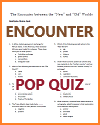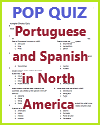Initiating the use of a wide variety of miscellaneous educational materials in your classroom can greatly enrich your high school World History students' understanding of the Columbian Exchange. Beyond traditional textbooks, incorporating visual aids like maps showing the movement of crops, animals, and diseases between the Old and New Worlds helps students grasp the global scale and direction of these exchanges. Primary source excerpts from explorers, indigenous peoples, and colonial officials offer firsthand perspectives on the effects—both beneficial and devastating—of these encounters.
Political cartoons, artwork, and journal entries can stimulate discussion on cultural interactions, environmental impact, and the transformation of societies. Infographics and timelines provide clear visuals that simplify complex processes, such as the introduction of new food staples like potatoes and maize or the spread of smallpox.
These varied resources engage multiple learning styles and foster critical thinking. They help students make connections between economic, ecological, and cultural changes, encouraging a more comprehensive and empathetic understanding of the Columbian Exchange and its long-term global consequences.
|












